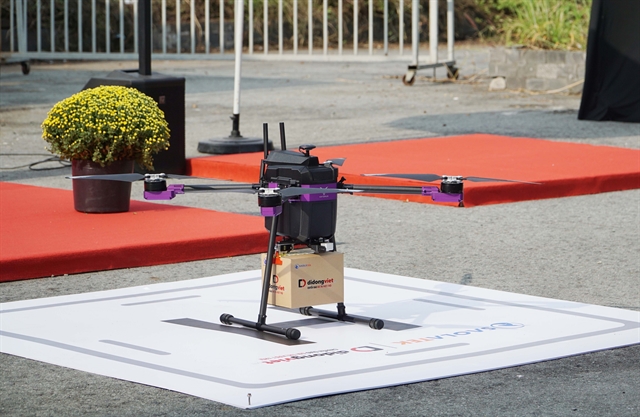 Features
Features

Emperors of the Nguyen Dynasty were gifted and passionate poets. In addition to books, they showcased their works on the walls and rooftops of imperial palaces and temples. Phước Bửu reports.
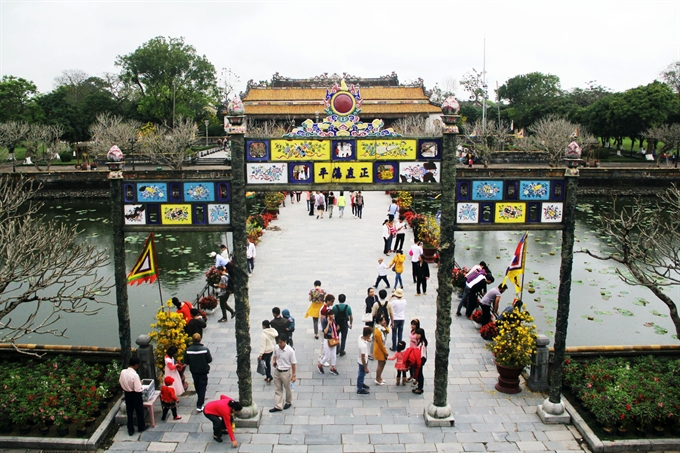 |
| Documented heritage: Front view of Thái Hòa Palace. — VNS Photo Phước Bửu |
Emperors of the Nguyễn Dynasty were gifted and passionate poets. In addition to books, they showcased their works on the walls and rooftops of imperial palaces and temples. Phước Bửu reports.
In monarchic Việt Nam centuries ago, a person was considered talented according to his capacity to write poems and essays, and sometimes his public speaking. Monarchic era scholars produced poems, some of which remain popular - and valuable - today.
Most of the poems were written in books. But recently it transpired that there were special ways to showcase the poems and preserve them in a manner worthy of a UNESCO distinction.
Royalty in the Nguyễn Dynasty (1802-1945), especially the kings, authorized the inscription of their poems on palaces, mausoleums, temples for their ancestors and dynasty-related pagodas.
The poems can be seen on walls and panels, on paintings and rooftops of royal structures.
“Those serve as documentary heritage items that are valuable on a national and international level. They reflect a keen sense of art and a capacity for poetry writing among the emperors,” said Phan Thanh Hải, director of the Huế Monuments Conservation Centre.
“The poem inscriptions reflect the mental power of the kings as well as the skills of calligraphers and carving artisans, whose efforts resulted in a very unique means of decoration born in the Nguyễn Dynasty and only found in Việt Nam,” he said.
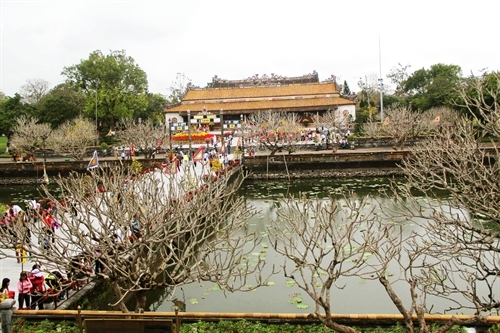 |
| On walls and rooftops: Front view of Thái Hòa Palace. — VNS Photo Phước Bửu |
Experts say royalty were very skilled poets. The kings sought ways to showcase their many poems, both for education and entertainment purposes, and the inscription on royal architecture was born.
The inscription of poems became a trendy architectural art, from the dynasty’s second king, Minh Mạng, to the 12th emperor, Khải Định. The art required skill, knowledge and talent on the part of the poets themselves, the calligraphers, carving artisans and painters.
The kings and their mandarins first selected poems and lines of prose that were meaningful and proper for the background of an intended building. The selected poems would then be written in the calligraphy of ancient Han Chinese characters. Carving artisans did the final work on concrete surfaces, wooden boards and even glass, using brush or broken porcelain pieces, ivory and enamel panels.
The work on glass, including the inscription of poems and accompanying paintings, was the most complicated as the artisans painted and wrote on the back and had to ensure that it could be read from the front. These pieces stand alone as a unique art form.
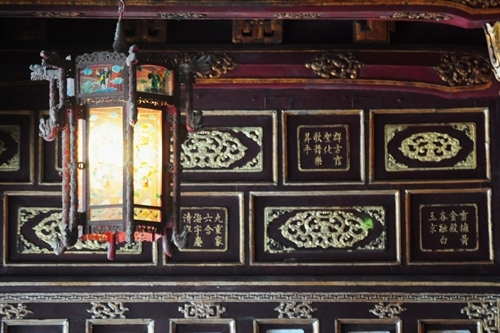 |
| Talent everywhere: Wooden roof connectors with poem inscription inside Thái Hòa Palace. — VNS Photo Phước Bửu |
The architectural poem inscriptions produced a unique ornamental norm called nhất thi nhất họa or nhất tự nhất họa, according to which a poem (nhất thi) would be accompanied by a painting (nhất họa), or a calligraphic word (nhất tự) and a painting.
The result, highlighted by red paint and gold-covered wood, broken porcelain pieces and colourful artistic patterns, made the interior of each building an art hall.
Stemming from the kings’ passion for poetry, poem inscription became an innovation in architectural decoration, setting it apart from the supernatural decoration patterns used centuries before.
The architectural inscription of poems also conveyed the message of patriotism and social norms. They turned the royal capital city of Huế into a unique and virtually unprecedented grand museum of Han character poems.
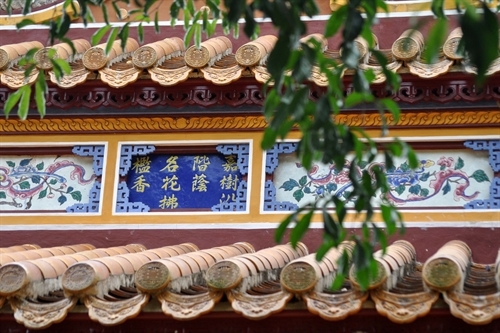 |
| Han calligraphy: Closer view of a poem inscription on concrete bar on Đồng Khánh Mausoleum’s rooftop. — VNS Photo Phước Bửu |
A study by the Huế Monuments Conservation Centre that manages all the relics of the dynasty, found a total of 2,967 poems on buildings in Huế, including the Thái Hòa Palace, Hưng Tổ Temple, Thế Tổ Temple, Triệu Tổ Temple located inside the Imperial City, the mausoleums of kings Minh Mạng, Thiệu Trị, Đồng Khánh, Dục Đức and Khải Định, and Long Ân Palace near the Imperial City.
This total does not include other poems inscribed on Thái Tổ Temple, Cần Chánh Palace, Càn Thành Palace, Khôn Thái Palace, which records show were home to thousands of architectural poem works but were destroyed by wars.
The Nguyễn royalty attributed great importance to the architectural poetry. At Thái Hòa (Supreme Harmony) Palace, where kings met with mandarins and conducted royal ceremonies, poems were inscribed on almost every side of the building, including the front and back roofs, interior walls and roof connector panels.
Thế Tổ Temple, built for worshipping dynastic ancestors, is home to a majority of the remaining royal poems. Those were even inscribed on wooden boards connecting the roof beams.
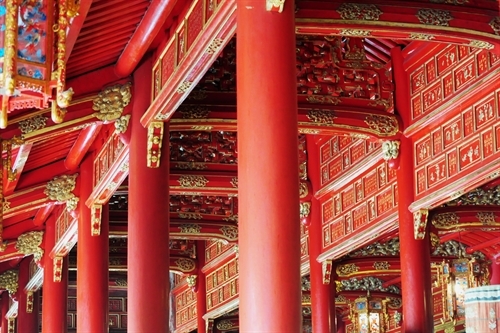 |
| Ancestor worship: Poem inscribed on wood panels found in Thế Tổ Temple. — VNS Photo Phước Bửu |
In May, UNESCO’s Asia Pacific Regional Committee for the Memory of the World Programme (MOWCAP) included the Royal Literature on Huế Royal Architecture on its Memory of the World Regional Register for Asia and Pacific.
The Royal Literature on Huế Royal Architecture thus became the fifth remnant of the city to be recognised by UNESCO, joining the Huế Complex of Monuments and Huế Royal Court Music recognised as world culture items, and the Nguyễn Dynasty’s wood blocks and the Nguyễn Dynasty’s royal records listed in the Memory of the World Regional Register for Asia and Pacific.
 |
| Skill and knowledge: A painting and poem inscription hung in Long Ân Palace. — VNS Photo Phước Bửu |
Susan Vize, acting director of UNESCO in Hà Nội, said at the recognition ceremony held in June in Huế that the architectural poem inscriptions were a unique decorative art of the Vietnamese people.
She touted the architectural poem works as masterpieces summarizing the social, political and cultural development of the Nguyễn Dynasty over almost 150 years.
Although still in good condition, UNESCO has urged the conservation of the poetry works against the deterioration of time. Nguyễn Văn Cao, chairman of Thừa Thiên-Huế Province People’s Committee, pledged to protect the works and record them digitally.
Future study of the poem inscriptions is expected to provide additional insight into the content of the poems as well as their unique inscription methods. — VNS

